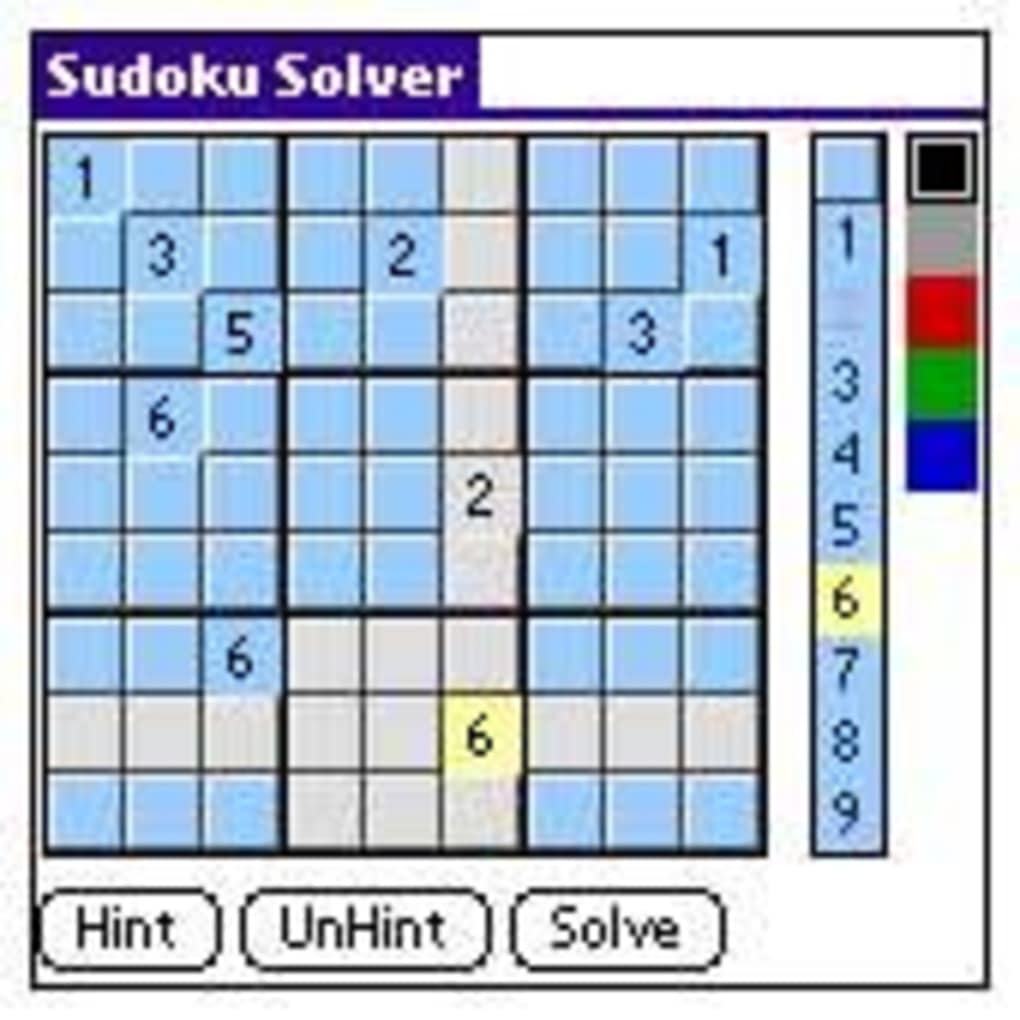

Every Sudoku puzzle starts with some of the cells already filled in. The aim here is to fill a grid with numbers in a way that each of the columns, each row, and all the grids must contain numbers with digits from 1 to 9. It is in the format of a box divided into 9*9 rows and columns including 3*3 sub-grid which results in a total of 81 cells which are also called Latin square. Before learning more about them, let’s take a look at some of the basics of Sudoku including the rules, in the game, and terminology.įor anyone who is still not aware of it, we should know that Sudoku is s a logic-based and number-placement puzzle. There are a few aspects of Sudoku puzzles. In reality, these puzzles are well structured and pretty predictable like general mathematics. Moreover, on the other side, if you do not have any appropriate solution techniques, it is going to take a lot of guessing and checking as well. On one side there are so many numbers, and it seems so mathematical. Image from 3Dsol.gif under Creative Commons licensing for reuse and modification.People that are new to Sudoku puzzles are going to have great difficulty in solving one. Image from Hypersudoku18Solution.svg under Creative Commons licensing for reuse and modification. Image from under Creative Commons licensing for reuse and modification. Image from SudokuChampionship 2015Sofia Bulgaria05.JPG under Creative Commons licensing for reuse and modification. Image from SudokuChampionship 2015Sofia Bulgaria02.JPG under Creative Commons licensing for reuse and modification. World Sudoku Championships Accessed February 16, 2016. A null relationship between media multitasking and well-being. The relationship between amygdala activation and passive exposure time to an aversive cue during a continuous performance task.

Strigo IA, Simmons AN, Matthews SC, Craig AD.

Combination training in aging individuals modifies functional connectivity and cognition, and is potentially affected by dopamine-related genes. Pieramico V, Esposito R, Sensi F, et al. This algorithm provides a more efficient means for solving Sudoku puzzles. In more advanced puzzles, it may be necessary to guess and check (which is why Sudoku is best practiced with a pencil) or to find a more sophisticated way to process the clues.ĭonald Knuth developed a backtracking algorithm called Algorithm X and a technique called Dancing Links (DLX) to utilize it. In an easy-to-solve Sudoku, careful observation and backtracking are usually all it takes to solve the puzzle. When backtracking, it helps to keep all the dimensions of the puzzle in mind and to look horizontally and vertically for clues, as well as within each 3 × 3 3\times 3 3 × 3 box. Each (correct) answer adds further constraints for the remaining spaces in the same row, column, or box, helping to narrow the candidate banks for the remaining questions. When the candidate bank has been narrowed to one for a particular space, that numeral can be added to the grid. For each blank, the solver can build a candidate bank, a list of all the numbers that meet the known constraints. The constraints given at the beginning of the puzzle narrow down the available numerals that can be placed in the empty boxes. Backtracking is the most commonly used and easy to understand, though probably not the most efficient. There are numerous ways to solve a Sudoku puzzle.


 0 kommentar(er)
0 kommentar(er)
